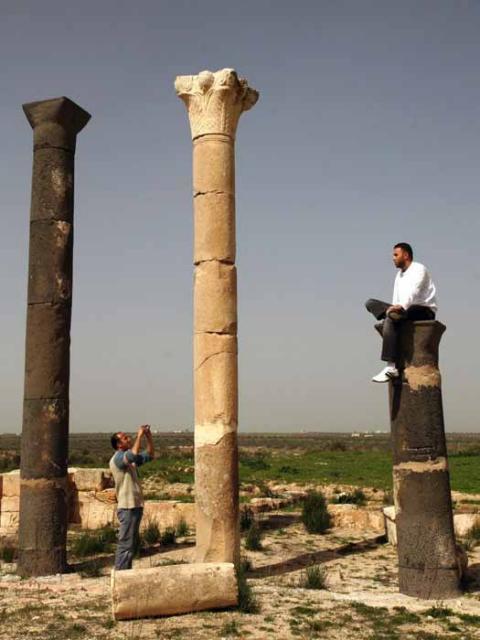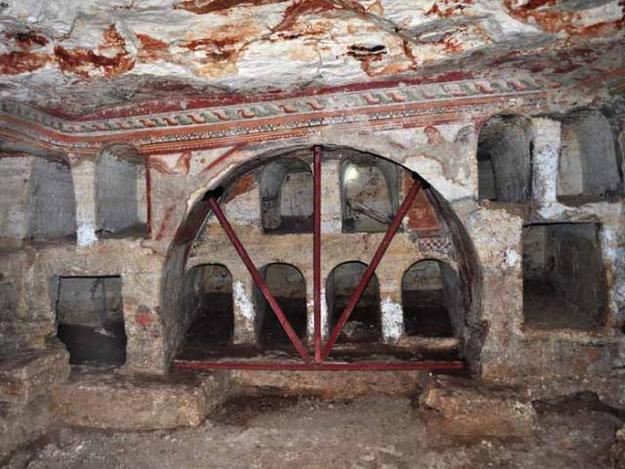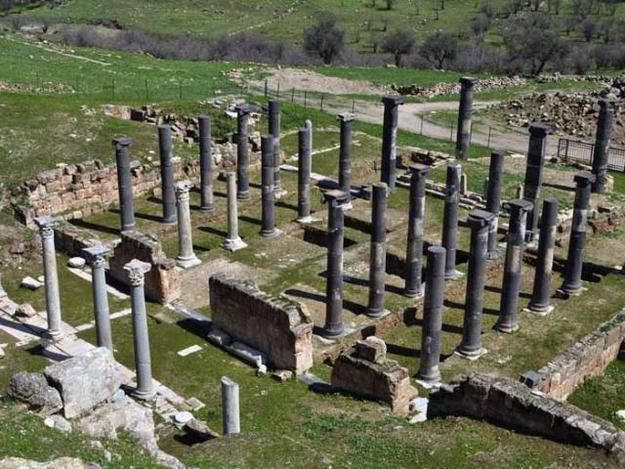Abila
2012 World Monuments Watch
The archaeological site of Abila is situated in a fertile region in northern Jordan, surrounded by olive and pomegranate groves. Archaeological evidence reveals habitation as early as 8000 B.C., though the majority of remains are from the Roman, Byzantine, and Islamic periods. Once a prosperous city in the eastern region of the Roman Empire, it was destroyed by an earthquake and abandoned in 746 A.D. The site is accessed from a Roman bridge, and partial excavations over the past two centuries have uncovered public buildings made of limestone and basalt. A theater built alongside a hill is partially excavated, while columns from a Christian basilica still stand and early Umayyad ruins have been uncovered. The structural remains illustrate the grandeur of the city, which was once part of the Decapolis, a group of Hellenistic cities in the region. An important feature of the site is the Roman necropolis, its tombs decorated with polychrome frescoes. Although the excavations at Abila have revealed a tremendous amount of material, there is an absence of site conservation and maintenance that has lead to erosion and damage. Looting is frequent, and there is little protection at the site. Abila is an important archaeological site set in a pristine agricultural and natural landscape, and the local authorities have a strong interest in developing a preservation and tourism strategy for the site. Integrated planning will protect this important place for future generations and could serve as a vehicle for conservation training, public education, and economic opportunities for the local community.



